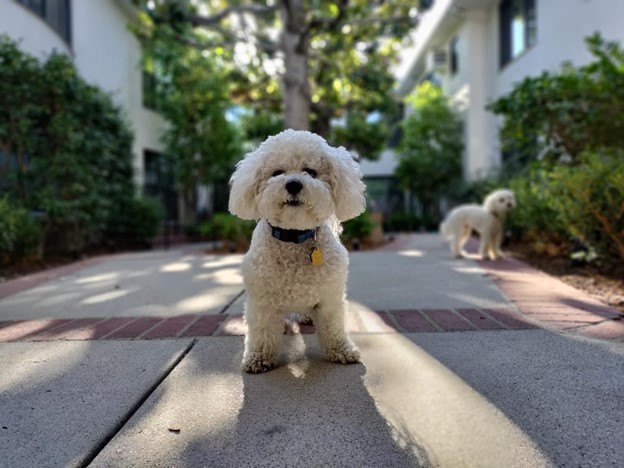
Are you a dog lover with allergies? The persistent sneezing, itchy eyes, and congestion can be a real challenge for those who like furry four-legged friends but have dealt with allergies. Fear not, though, as there is a method that will enable you to enjoy a dog’s company without having to deal with these allergy attacks.
In this comprehensive article, we’ll delve deep into what hypoallergenic hounds are and how they can alleviate allergy symptoms. This guide will also provide tips on how to choose the right hypoallergenic breed and why they can be a game-changer for allergy sufferers.
Understanding Allergies to Dogs
Allergies to dogs, also known as canine allergies or pet allergies, are a common issue faced by many pet enthusiasts. According to the Asthma and Allergy Foundation of America, approximately 10% to 20% of the population experiences some form of pet-related allergies. Sneezing, runny nose, itchy skin, and even asthma crises are just some examples of symptoms. These reactions can be brought on by allergens found in dog dander, saliva, and urine. This may make owning a dog seem like an impossibility.
Allergies have effects that go beyond the physical; they can also harm one’s mental health. The thought of not being able to live with a furry friend is upsetting for many individuals. Fortunately, hypoallergenic dogs offer a glimmer of hope.
What Makes a Dog Hypoallergenic?
Hypoallergenic dog breeds are less likely to release allergens, making them a better choice for people with allergies. While no dog breed is entirely hypoallergenic, these dogs have certain characteristics that reduce the likelihood of allergic reactions in these cases:
- Low Shedding: Hypoallergenic dogs tend to shed less dander, reducing the allergen exposure. Dander consists of tiny, often microscopic skin flakes that can carry allergenic proteins. When released into the air, these particles become airborne allergens, triggering reactions in allergy-prone individuals. With fewer airborne allergens present around a hypoallergenic hound, allergy sufferers are less likely to experience the typical symptoms, such as sneezing, itchy eyes, or respiratory issues.
- Low Saliva Production: These breeds produce less saliva, which contains allergens. As a result, there is less allergenic saliva being transferred from your dog’s fur, through licking or grooming, to your living space. In hypoallergenic breeds, the reduced production of allergenic saliva means that there is less of this substance being spread onto surfaces and into the surrounding air.
- Low Urine Protein: Hypoallergenic dogs excrete fewer allergenic proteins in their urine. Reduced allergenic protein levels in urine mean that there is less potential for these allergens to contaminate floors, carpets, or other surfaces within the home. This, in turn, contributes to a reduction in overall allergen exposure. It’s another layer of protection that hypoallergenic dogs provide for allergy sufferers, allowing them to enjoy the companionship of their furry friend without the constant worry of allergen-related symptoms.
Hair Vs. Fur
While many people may assume that all dogs have fur, the reality is more nuanced – some dogs boast hair instead, and this distinction plays a significant role in allergy management. It’s not merely semantics; the difference between hair and fur can greatly impact your allergies. Here’s how to differentiate them apart:
Hair:
- Hair tends to grow longer, often giving dogs a flowing and elegant appearance.
- The growth cycle of hair is extended, meaning it doesn’t need as frequent attention as fur.
- Dogs with hair shed less frequently, contributing to a cleaner living environment.
- Hair typically grows in a single, sleek layer.
Fur:
- On the other hand, fur is shorter and thicker than hair
- It has a faster growth cycle and tends to become thicker during the winter months
- Dogs with fur often shed their coat regularly, and some may even possess a double coat.
Hypoallergenic dogs, which have hair rather than fur, can be a game-changer for allergy management. With these dogs, you can bid farewell to sneezing fits and allergic reactions, making your home more inviting and comfortable for everyone who visits.
Individuals with severe allergies may still experience mild reactions in the presence of hypoallergenic dogs. It’s helpful to understand that hypoallergenic dogs provide a significant reduction in allergen but it’s equally vital to acknowledge that some level of allergy management and maintenance is still necessary for allergy sufferers who choose to share their lives with these wonderful companions.
Choosing the Right Hypoallergenic Dog
Selecting the ideal hypoallergenic dog involves several factors that go beyond just the breed’s hypoallergenic qualities. Keep these key aspects in mind:
Lifestyle Compatibility
First and foremost, think about your daily routine and activity level. It’s important to choose a hypoallergenic dog breed that matches your lifestyle. Some hypoallergenic breeds are more active and require regular exercise, while others are content with indoor play and short walks.
Going through this careful and thoughtful process is similar to considering how different fish species have specific requirements for water parameters. For example, the ideal temperature for your betta fish is valuable to their sustainability and an aquarist needs to be conscious of this responsibility.
If you lead an active life and enjoy outdoor activities, a breed like the Poodle may be an excellent fit. Poodles are known for their intelligence and agility, making them ideal companions for hiking or running. On the other hand, if you prefer a more relaxed pace, breeds like the Bichon Frise or Maltese are known for their adaptability to apartment living and do well with moderate exercise.
Allergy Testing Guidance
Understanding your specific allergies is another crucial step in choosing the right hypoallergenic dog. Just as maintaining the right environment for your betta fish involves monitoring water quality and temperature, knowing your allergies can guide you toward a compatible dog breed.
Consider undergoing allergy testing to pinpoint the specific allergens that affect you. This information will help you choose a hypoallergenic breed that is less likely to trigger your allergies. It can also guide you in making adjustments to your home environment to further reduce allergen exposure, such as investing in an air purifier designed to capture pet allergens.
Researching Breed Characteristics
Beyond allergies, researching the characteristics and temperament of hypoallergenic breeds is essential. There’s a wide variety of hypoallergenic dog breeds to choose from, each with its unique charm. Some popular options include the Poodle, Bichon Frise, Maltese, Schnauzer, Shih Tzu, and more. These breeds are not only adorable but also less likely to trigger allergies.
Every breed has specific personality characteristics and grooming requirements. For instance, while Shih Tzus are known for their friendly and affectionate nature, Schnauzers are often praised for their intelligence and loyalty. Poodles are known for their intelligence and versatility, making them great companions for various activities. On the other hand, Bichon Frises are famous for their affectionate nature and adaptability to different living environments.
Understanding these breed-specific traits can help you find a hypoallergenic dog that aligns with your preferences and lifestyle. Just as you would provide the right habitat and care for your betta fish, ensuring a good match between you and your hypoallergenic dog will lead to a harmonious and fulfilling relationship.
Caring for Your Hypoallergenic Hound
Once you’ve chosen your hypoallergenic companion, proper care is a must Here are some tips to ensure your dog stays healthy and allergy-friendly:
- Regular Grooming: Frequent grooming can help reduce shedding and allergen buildup. Brush your dog regularly and bathe them at least twice a week, per the Allergy, Asthma and Immunology Research. Consider establishing a grooming routine or talk to a professional groomer for specialized care.
- Healthy Diet: Provide a balanced diet with high-quality food to support your dog’s overall health. Consult with your veterinarian to choose the best food for your dog’s specific needs. Just like humans, dogs thrive when given proper nutrition tailored to their age, size, and activity level.
- Routine Vet Visits: Regular check-ups with the veterinarian are vital to catch any health issues early. Make sure your hypoallergenic dog receives vaccinations, preventive care, and dental check-ups as recommended by your vet. A healthy dog is less likely to trigger allergies.
Hypoallergenic Dog Adoption and Allergy Management
Adopting a hypoallergenic dog is not just about finding the right breed; it’s also about creating an environment that minimizes allergen exposure. Here are some additional tips for successful adoption and allergy management:
- Consult Allergists: Before bringing a hypoallergenic dog into your home, consult with an allergist. They can provide advice on managing your specific allergies and may recommend medications or immunotherapy to help you tolerate allergens better.
- Allergen-Proofing Your Home: Implement measures to reduce allergen exposure within your home. This may include using allergen-proof bedding, investing in a high-efficiency particulate air (HEPA) filter for your HVAC system, and cleaning your home regularly. Vacuum cleaners with HEPA filters can help capture allergens effectively.
- Allergy-Friendly Flooring: Consider replacing carpeting with hardwood or tile floors. Carpets can trap allergens, making it more challenging to keep your home allergen-free.
- Regular Cleaning: Cleaning your dog’s living space is necessary. Wash their bedding and toys frequently, and vacuum areas where they spend time. Use pet-friendly, hypoallergenic cleaning products to reduce the chances of allergen buildup.Using dog ear wipes can be a crucial part of your allergy management routine. These wipes are designed to prevent allergy irritants and ear infections in dogs by removing environmental allergens and reducing bacteria. This creates an allergen-free environment for both you and your furbaby.
- Outdoor Activities: Spend quality time outdoors with your hypoallergenic dog. Outdoor environments have fewer allergens, allowing you to enjoy time together without allergy worries.

CONCLUSION
Hypoallergenic hounds are indeed a solution for dog lovers with allergies. By understanding the characteristics of hypoallergenic breeds, selecting the right one, and providing proper care, you can still enjoy the companionship of a furry friend without the allergy struggles. Explore the adoption options available when finding the perfect hypoallergenic companion today so you can embark on a journey filled with love, joy, and bliss!
